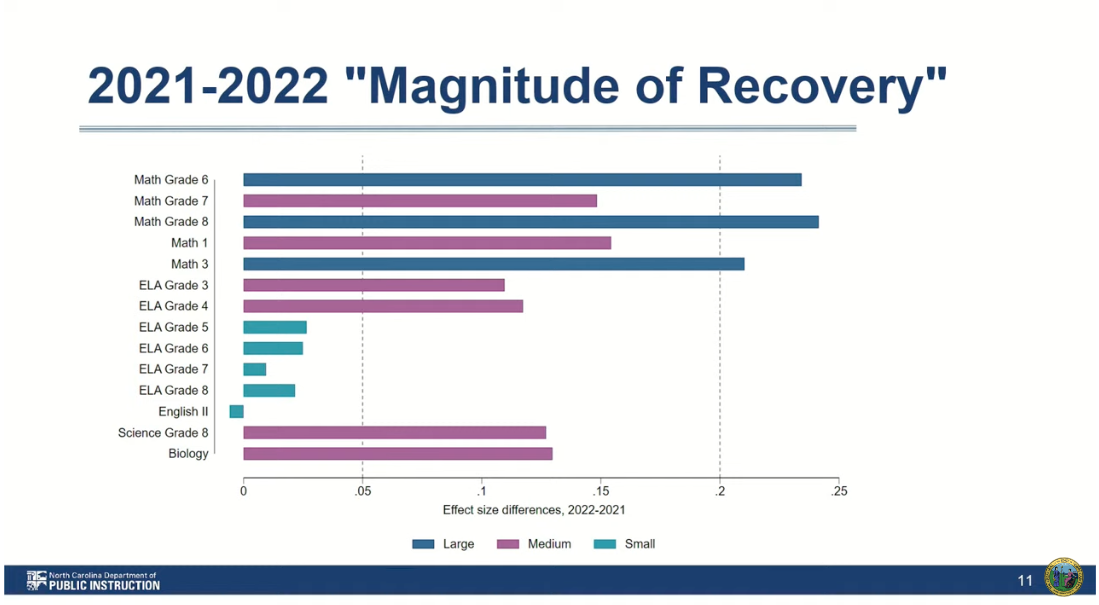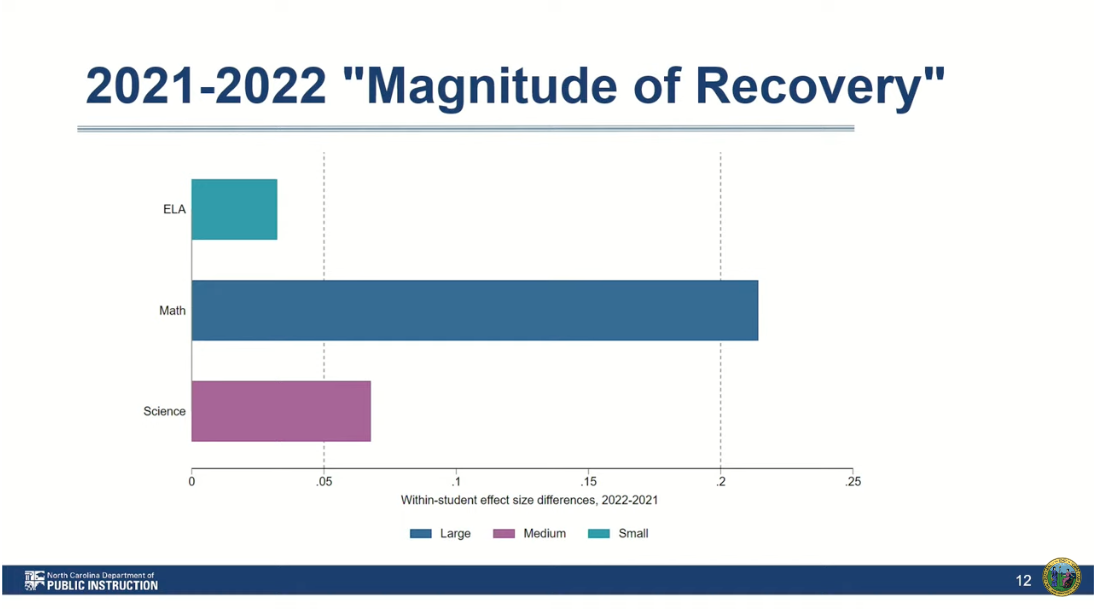The worst of pandemic-induced learning loss is behind us but there’s still work to do. That’s according to data in a new report from the N.C. Department of Public Instruction.
The good news was delivered to the N.C. House K-12 Education Committee on April 18 by Dr. Jeni Corn, director of research and evaluation for DPI’s Office of Learning Recovery and Acceleration.
The report compared results from end-of-grade and end-of-course tests from the 2018-2019 school year to the those from the 2021-2022 school year. Testing was suspended during the depths of the pandemic, so comparisons to earlier data were needed.
The most significant gains came in middle and high-school math, followed by recovery in third- and fourth-grade reading, eighth-grade science, and high-school biology.
“North Carolina is on track. We are in the phase of recovery,” Corn told lawmakers in the committee meeting.


A previous report showed that as much as 15 months were needed for students to fully recover. The new data show those figures have been roughly cut in half in many areas. That means progress has been made but work remains to get students back to where they were, according to state officials.
“What this says to me and has said to many of our local elected leaders is that getting kids back in the classrooms with their teachers, with their peers, really getting that hands-on, really made a difference for them in math and in science,” Corn said.
“The results from the 2021-22 school year empirically confirm what we’ve been hearing from teachers and principals and parents around the state,” said State Superintendent of Public Instruction Catherine Truitt in a statement. “Our schools and districts have made incredible strides in helping so many of our students get back on track to their pre-pandemic performance. This data also tells us there is more work to be done and fortunately we still have federal funding available to support interventions targeted at the students who need it most.”